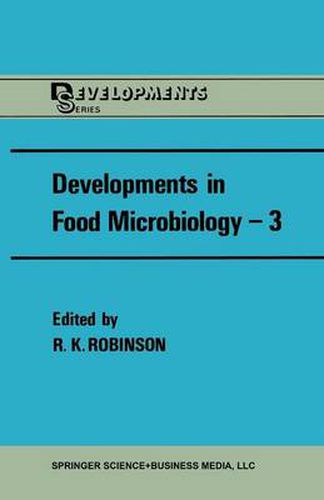Readings Newsletter
Become a Readings Member to make your shopping experience even easier.
Sign in or sign up for free!
You’re not far away from qualifying for FREE standard shipping within Australia
You’ve qualified for FREE standard shipping within Australia
The cart is loading…






This title is printed to order. This book may have been self-published. If so, we cannot guarantee the quality of the content. In the main most books will have gone through the editing process however some may not. We therefore suggest that you be aware of this before ordering this book. If in doubt check either the author or publisher’s details as we are unable to accept any returns unless they are faulty. Please contact us if you have any questions.
The previous volumes in this series have included contributions on a varied range of topics. Some subjects were virtuaIIy self-selecting-no text on food microbiology could ignore the importance of food-borne pathogens-but others were included to iIIustrate, in some measure, the fascinating diversity of facets encompassed by the title. This same approach has been adopted in the present volume, so that while central issues, such as current views on the taxonomy of food-borne fungi, are discussed, the interfaces between ‘classical’ microbiology and other relevant disciplines have also been explored. The impact of economic constraints on fermentations is one such area of interaction, while the rapidly developing subject of tissue culture offers some exciting chaIIenges for any microbiologist wishing to apply his or her expertise in a somewhat paraIIel field. It can be argued, of course, that a scientific text should be held within tight guidelines, and certainly the academic demands of microbiology are becoming increasingly stringent. Nevertheless, novel ideas can often arise from a casual insight into an adjacent area of study, and it is, perhaps, appropriate that the Developments Series should find space for just a few, speculative incursions. Whatever the precise format, however, the basic intention of the series remains unaltered, and if this volume does provide food microbiologists with a useful source of information and/or further reading, then the endeavours of the authors wiII have been worthwhile.
$9.00 standard shipping within Australia
FREE standard shipping within Australia for orders over $100.00
Express & International shipping calculated at checkout
This title is printed to order. This book may have been self-published. If so, we cannot guarantee the quality of the content. In the main most books will have gone through the editing process however some may not. We therefore suggest that you be aware of this before ordering this book. If in doubt check either the author or publisher’s details as we are unable to accept any returns unless they are faulty. Please contact us if you have any questions.
The previous volumes in this series have included contributions on a varied range of topics. Some subjects were virtuaIIy self-selecting-no text on food microbiology could ignore the importance of food-borne pathogens-but others were included to iIIustrate, in some measure, the fascinating diversity of facets encompassed by the title. This same approach has been adopted in the present volume, so that while central issues, such as current views on the taxonomy of food-borne fungi, are discussed, the interfaces between ‘classical’ microbiology and other relevant disciplines have also been explored. The impact of economic constraints on fermentations is one such area of interaction, while the rapidly developing subject of tissue culture offers some exciting chaIIenges for any microbiologist wishing to apply his or her expertise in a somewhat paraIIel field. It can be argued, of course, that a scientific text should be held within tight guidelines, and certainly the academic demands of microbiology are becoming increasingly stringent. Nevertheless, novel ideas can often arise from a casual insight into an adjacent area of study, and it is, perhaps, appropriate that the Developments Series should find space for just a few, speculative incursions. Whatever the precise format, however, the basic intention of the series remains unaltered, and if this volume does provide food microbiologists with a useful source of information and/or further reading, then the endeavours of the authors wiII have been worthwhile.